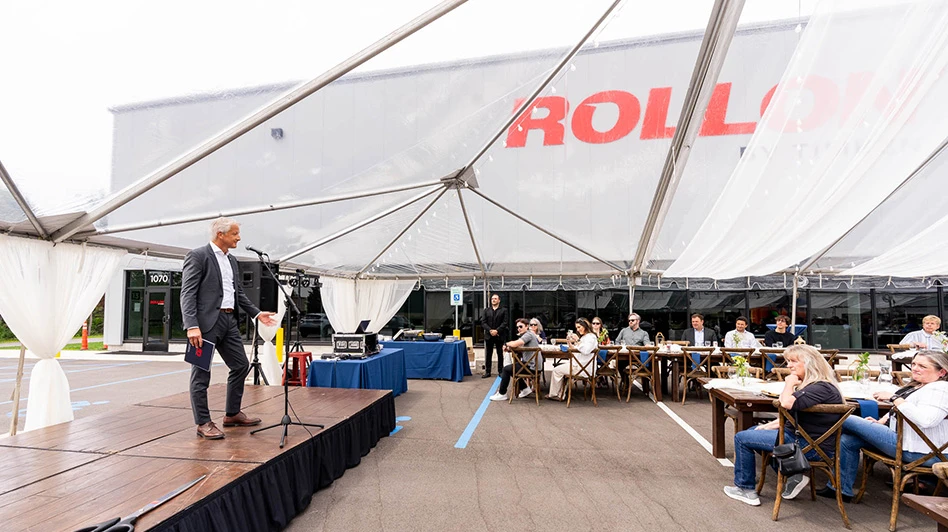 The $130 billion medical device sector is likely to be affected by three key trends in the short- to medium-term – the drive for technology focusing on earlier and more accurate diagnostics, advances in IT/e-health technologies, and perhaps most important, the miniaturization of devices.
The $130 billion medical device sector is likely to be affected by three key trends in the short- to medium-term – the drive for technology focusing on earlier and more accurate diagnostics, advances in IT/e-health technologies, and perhaps most important, the miniaturization of devices.
In the medical device industry, the usual advantages of making smaller parts (reduced material usage, weight, and cost) are exacerbated by the requirement for less invasive treatments. Opportunities for diagnoses and treatments if devices can be swallowed, ingested, or inserted in the body are huge, constantly stimulating innovation in the micro-manufacturing field. Couple this with the overarching demand from patients and health care providers to rationalize the costs associated with medical treatment, and medical device OEMs are constantly on the lookout for cost-effective and efficient manufacturing processes.
|
Medical saw blade Photo etching reduces the cost of many precision sharp parts including sagittal/oscillating orthopedic saw blades. Traditionally, such sharp-toothed blades have been manufactured using laser technology followed by precision grinding to achieve the required tooth off-set. Precision Micro combined its laser evolved etch process (LEEP) with advanced wire erosion techniques to improve part quality. Tooth off-set and blade topography is achieved using a depth-etch technique with dissimilar patterns on each side of the blade. An etch resist is applied to both surfaces and a pattern is exposed on each side simultaneously using laser direct imaging. This guarantees top/bottom pattern alignment. The exposed plate is then developed, revealing the metal to be etched away. The depth-etch process erodes the metal from both sides simultaneously, generating the required topography but leaving the blade within the overall metal sheet. Photo etching can become uneconomical at more than 1.5mm thicknesses due to the amount of time involved in the chemistry, so Precision Micro profiled blades using wire EDM. Adding a second operation was more cost-effective for the customer. Sheets are stacked and machined to produce hundreds of blades in a single cycle, achieving tolerances of <±5µm. Advanced wire EDM can generate parallel sidewalls with sufficient accuracy to create the ultra-sharp tooth profile required. The blades are manufactured from a hardened, Sandvik martensitic stainless steel, with good corrosion resistance high toughness, and excellent fatigue strength. Being an ambient temperature process, the blades are not subject to thermal stress, and all the original material properties are maintained. This process combination uses all digital tooling, making it economical to manufacture numerous versions of bone saw blades, optimized for medical procedures. |
Choice of process and partner
Often, people within medical device OEMs are medical scientists, not medical product manufacturers. They need to be able to access the best-fit manufacturing processes, and this is usually done by engaging specialist precision engineering companies that can take original design intent and convert it into viable and marketable products. The emphasis is on partnership with qualified manufacturing professionals, but also key is selecting of partners with expertise in manufacturing processes that match with industry demands.
 For metal parts and components, an increasing number of medical device OEMs are assessing and embracing photo etching for manufacturing.
For metal parts and components, an increasing number of medical device OEMs are assessing and embracing photo etching for manufacturing.
Photo etching is a versatile and increasingly sophisticated metal machining technology, with an ability to mass manufacture complex and feature-rich metal parts and components. The process uses photo-resist and etchants to chemically machine selected areas. It is characterized by retention of material properties, burr-free and stress-free parts with clean profiles, and no heat-affected zones.
Because photo etching uses easily re-iterated and low-cost digital tooling, it provides a cost-effective, highly accurate, and speedy manufacturing alternative to traditional machining technologies such as metal stamping, pressing, CNC punching, and laser and water-jet cutting.
Traditional machining technologies can produce less than perfect effects in metal at the cut line, often deforming the material being worked, and leaving burrs, heat-affected zones, and recast layers. In addition, they struggle to meet the detail resolution required in ever smaller, more complex, and more precise metal parts. When orders runs up to a few million, and precision is key, photo etching with its lower tooling costs is often the most economic and accurate process.
Another factor to consider is the thickness of the material to be worked. Traditional processes tend to struggle with thin metals, stamping and punching being inappropriate in many instances, and laser and water cutting causing disproportionate and unacceptable degrees of heat distortion and material shredding respectively. Photo etching can work on ultra-thin sheet metal, even as low as 10µm foil.
In intensely complex, feature-rich precision parts, photo etching is agnostic when it comes to shapes and unusual features. Feature complexity is not an issue, and in many instances, photo etching is the only manufacturing process that can accommodate certain geometries.
Precision Micro is constantly pushing the boundaries of what is possible in the process, making advances in etchant chemistry, developing the process to embrace more metals, and enhancing accuracy for its customers.
|
Biosensor
The biosensor design consists of three micro-engineered stainless steel tines, which resonate thousands of times a second, detecting microscopic changes in film thickness, density, and viscosity of a liquid sample, and converting the presence of bacterial toxins into an electronic signal. Photo-etching using tightly controlled chemistry, selectively removed metal, atom by atom, with micron accuracy, imparting no stress or burr on the base material. As every biosensor required a perfectly clean surface for consistent adhesion of the surface coating, Precision Micro developed a dedicated post-process cleaning operation supported by 100% automated optical inspection. The biosensor is being readied to make the transition to volume manufacture, expected to reach 50 million components throughout the next 5 years, using the same digital tooling. |

Conclusion
Photo etching will allow for the manufacture of complex precision devices, and in many instances, it is the only metal technology that can cost-effectively and repeatedly mass produce parts to the standards necessary in many medical applications.
In the medical device industry, any technology or manufacturing solution or process that enhances product functionality while reducing costs is to be welcomed.
|
Flat springs for hearing aids
The thin nature of the springs (38µm to 100µm) coupled with their overall size (4mm x 8mm), introduced other manufacturing challenges. These parts need to exhibit clean, burr-free profiles achieved through the photo etching process. Photo etching also allowed a high yield from the sheet, improving cost-effectiveness. For the thin flat springs used in the hearing aid, Precision Micro achieved tolerance of ±25µm. Various tooling iterations were required to achieve these standards. |
Precision Micro
www.precisionmicro.com
About the author: Albert Tsang is the technical manager at Precision Micro, Birmingham, UK. He can be reached at info@precisionmicro.com or +44 (0)121 380 0100.

Explore the July 2015 Issue
Check out more from this issue and find your next story to read.
Latest from Today's Medical Developments
- Diagnosis: Workflow Inefficiency | Treatment: Okuma Robot Loader Series
- Discover the future of manufacturing at GROB's 5-AXIS LIVE!
- Revolutionizing quality control with Hexagon's Autonomous Metrology Suite
- Autocam Medical's $70 million expansion to boost orthopedic job creation
- Platinum Tooling unveils new product catalog
- Meet the minds shaping CNC grinding at The Precision Summit
- Mitutoyo unveils innovative SurfaceMeasure-S Series sensors
- #69 Manufacturing Matters - Shopfloor Connectivity Roundtable with Renishaw and SMW Autoblok
 Diagnostic technology company Highland Biosciences, Duncanston, U.K., partnered with Precision Micro to develop and manufacture a miniaturized tuning fork biosensor. The component forms an essential part of Highland Bioscience’s microviscometer.
Diagnostic technology company Highland Biosciences, Duncanston, U.K., partnered with Precision Micro to develop and manufacture a miniaturized tuning fork biosensor. The component forms an essential part of Highland Bioscience’s microviscometer. For a hearing aid, material performance and integrity was critical. The diaphragm needed to flex precisely and repeatedly.
For a hearing aid, material performance and integrity was critical. The diaphragm needed to flex precisely and repeatedly.




